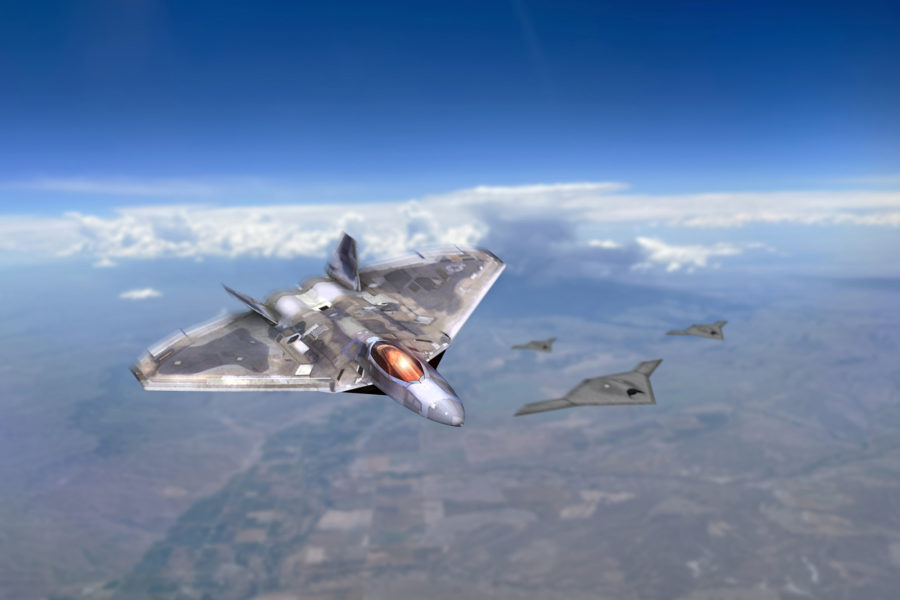The first iterations of Collaborative Combat Aircraft, the drones that will pair with manned platforms, will join the Air Force’s fighter fleet in “the later 2020s,” several years before the Next-Generation Air Dominance fighter, service acquisition chief Andrew Hunter told the House Armed Services tactical aviation panel on March 29.
Hunter also emphasized that CCAs will augment all types of tactical aircraft, not just the NGAD system.
Lt. Gen. Richard G. Moore Jr., deputy chief of staff for plans and programs, also set the top three missions of the CCAs, in order, as:
- shooters
- electronic warfare platforms
- sensor-carrying aircraft
The NGAD and CCAs are “on different timelines,” Hunter said, although they are “obviously closely related to one another as part of a family of systems.”
NGAD, he said, is a “very high-end capability” geared to the threat environment of the 2030s, and “we are working very hard to deliver [it] …in the early 2030s.” CCAs, meanwhile, are slated to join the force later this decade. Hunter also said the notional number of CCAs will be between 1,000 and 1,500 aircraft.
Air Force Secretary Frank Kendall told the House Appropriations defense panel on March 28 that CCAs could cost between one-half and one-quarter as much as an F-35. Lt. Gen. Michael J. Schmidt, F-35 program executive officer, quoted the price of an F-35A as $82.5 million in the March 29 hearing, which would put CCAs between $41.3 million and $20.6 million.
For the CCA program, “we are very much focused on speed-to-ramp, so we are looking to field that capability as rapidly as possible,” Hunter said. The Air Force’s approach in seeking proposals from industry for the autonomous, uncrewed aircraft will put a priority on contractors’ ability to “perform as quickly as possible,” Hunter said.
Moore, echoing previous Air Force officials, emphasized that CCAs are intended to build up the Air Force’s fleet of combat aircraft at an affordable price, providing the “amount of iron that needs to be in the air to confront an adversary like China.”
“The way that we can do that affordably is by buying CCAs, and by creating mass with CCAs,” he said.
The task now will be to define the tactics, techniques, and procedures needed to employ this new kind of weapon, and answer questions like whether CCAs will be part of manned fighter squadrons or “a separate entity,” and whether they will fly alongside crewed aircraft or “come together on the battlefield” from different places.
“Ordinarily we provide a requirement to industry, they come back with what we’ve asked for, and we know that it does exactly what we asked. In this case, we’ve asked a question to industry to see what’s possible rather than tell them exactly what we want,” Moore said.
The 2024 budget includes a request to create an experimental operations squadron which will explore and answer these questions, Moore said.
Asked what the CCAs will be counted on most to do, Moore laid out three basic mission sets.
First and foremost, he said, is “the ability to augment the combat force as shooters.” Second is “the ability to conduct electronic warfare” and the third is “the ability to be sensors in the battlespace.”
Pressed by lawmakers as to whether the Air Force needs seven additional fighter squadrons, as the service stated in the 2018 white paper, “The Force We Need,” Moore said it will depend on the success of the CCA concept.
“But certainly, capacity is an issue and the mass that it takes to confront an adversary like China is intense,” Moore said.
Both Hunter and Moore emphasized that CCAs are being procured in addition to all the crewed fighters the Air Force plans to acquire, not in lieu of any of them. They will “augment” the manned fighter force, not replace it, Hunter said.
